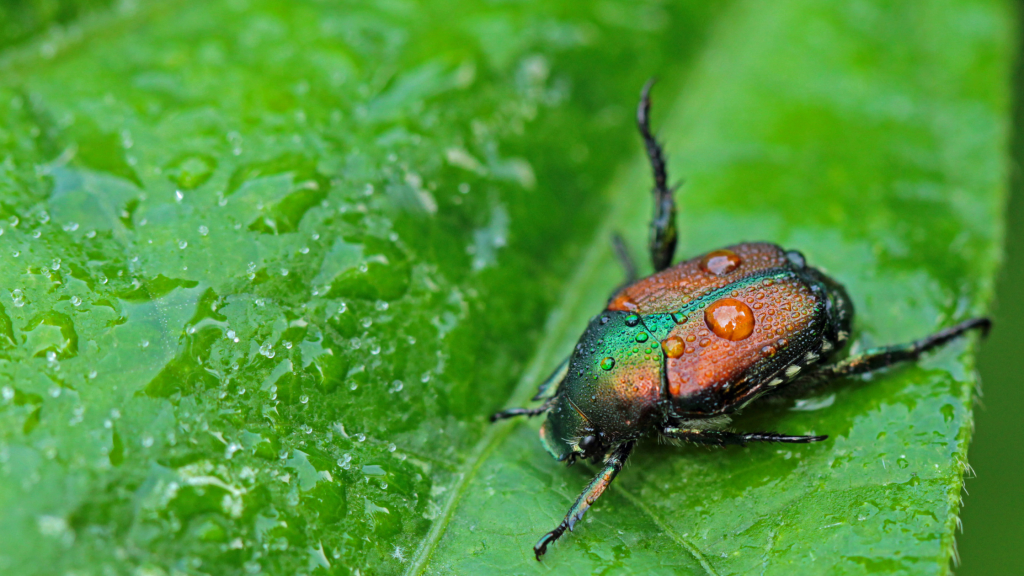
Japanese Beetles
Heading further into the summer season, many people will begin to notice Japanese Beetles throughout their yards! Here are treatment methods and information about them that will help you deal al with them!
About Japanese Beetles
Japanese beetles are a highly invasive species that are found outside on any type of foliage like leaves, plants, and trees. They most commonly live east of the Rockies and in the midwest of the United States. They are highly invasive during summer months but have a full 12-month life cycle. Their appearance is shiny-metallic green with copper brown wings, and about ⅜ inches long. As interesting as they look, they cause a lot more damage than people think!
Japanese beetles are mostly found on fruit and vegetable plants and rose bushes, but can feed on over 300 plant species. An obvious way of knowing they are present is by seeing the damaged appearance on plants like holes on a blooming plant or dead patches of grass. They feed on these sources, to the point that they end up killing them.
Life Cycles
Many people have the common misconception that Japanese Beetles reproduce during the summertime, and once winter comes they die off. They have a 12-month life cycle and will hide during the cold season. Here is an explanation of what that process looks like!
- Larvae hatched – August is when they will lay newly hatched larvae and begin to burrow underground for protection from the cold. A female Japanese beetle will lay 1-5 eggs in a spot and put them 2-4 inches underground where they can absorb moisture. During this time, they feed on roots until June – when they emerge as adult beetles.
- Adult beetles leaving underground – Late June – early July is when adult beetles begin to emerge. Once they start, they release pheromones, which is a chemical substance that they use to communicate with other beetles when they are also emerging from the ground, to attract them into the same area.
- Feeding season – Japanese beetle feeding is very heavy during mid to late July. They cause damage to plants, as they focus on the roots of plants or veins on leaves. They begin to damage the source from the moment they are hatched underground, as they feed on roots, and then restart the whole process all over again.
Treatment
As a pest control company, we understand the importance of wanting to take care of your home and the difficulty it can be specifically with Japanese beetles. We looked into many different treatment methods, and have a service specifically for them!
- Specialty Service vs Regular Treatment – Japanese Beetles are a problem down to the root of a plant, with our specialty service we use a product that is systemic and applied at the base aimed towards to the root. This is a complete difference from our regular maintenance spray, which is not effective for Japanese Beetles. We also include a service for the early stage of their life cycle, before they fully emerge from the ground which is significant in helping with the summer activity. Many customers feel more confident and safe about the protection of their yards and ornamental gardens with this highly effective treatment.
- Ways to protect flowering/edible plants – As a company, we are always mindful of being careful with any treatment that happens. Regularly, we avoid going anywhere near plants and gardens, but with this new service, something different we can do is treat flowering plants or trees at only the base. We continue to always want to make sure any edible plants are safe and we do not treat them.
To learn more about our Japanese Beetle service, please contact our office at (844) 922-7732.
